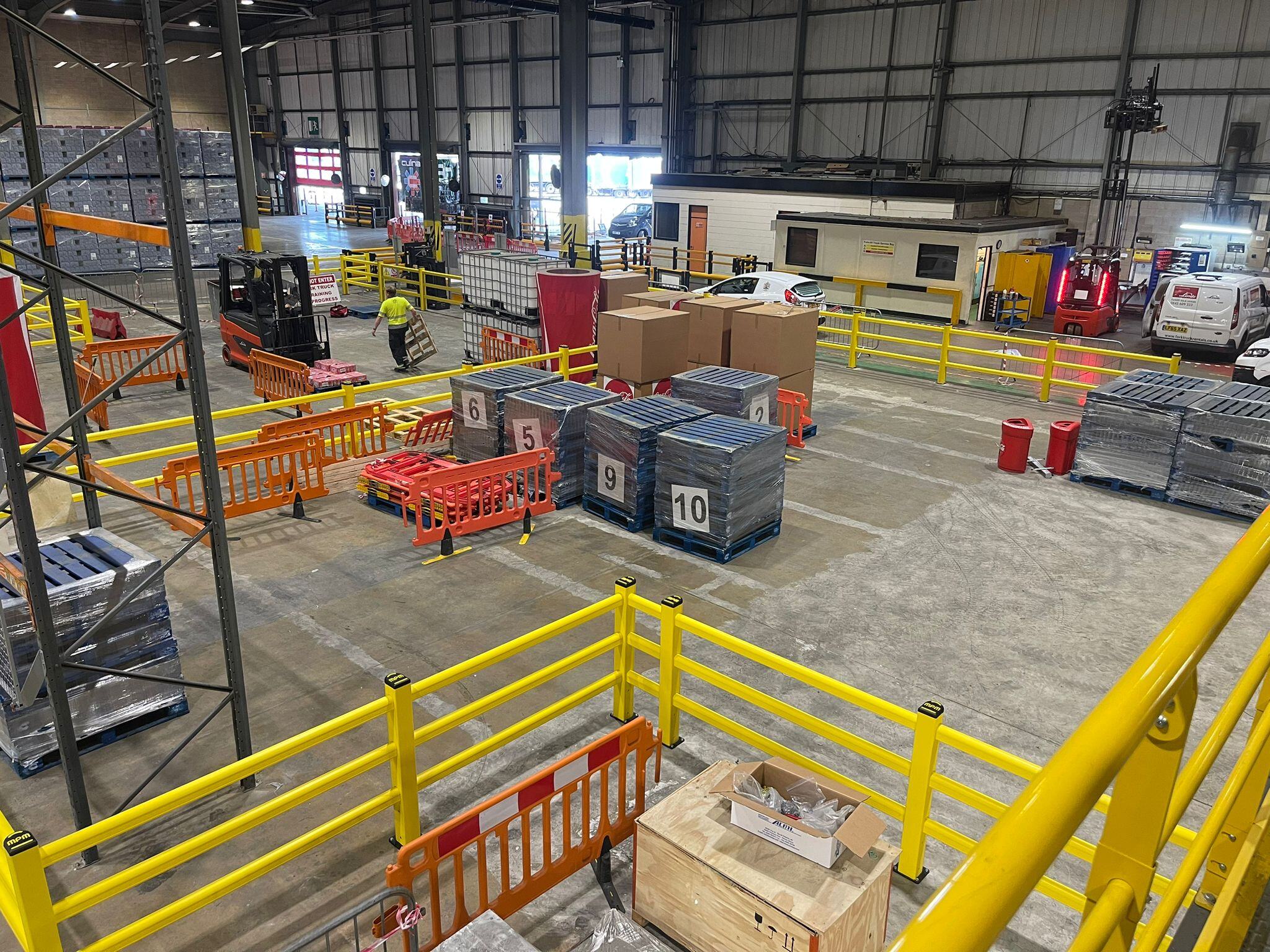Metal barriers vs Plastic polymer barriers. What's the difference?
 By
Alana Graham
·
3 minute read
By
Alana Graham
·
3 minute read
In many warehouses across the UK, there are literally miles of steel barriers in use. Metal barriers have been an effective way of segregating everything from the heaviest quarry machinery, down to the smallest pallet trucks, so why would anyone consider looking at polymer barriers? If you are looking at replacing some existing steel barriers and wondering if a polymer barrier is the right solution for your warehouse, then this article is for you. At Clarity, we offer both steel and polymer barriers, so we really sit on both sides of the fence. By the end of this article, you’ll know the pros and cons of each type of barrier.

Contents:
- What is a steel barrier?
- What is a polymer barrier?
- What are the advantages of a steel barrier system?
- So, what are the advantages of a polymer barrier system?
- So, which is the right barrier type for you steel or polymer?
What is a steel barrier?
Well, a steel barrier is typically a galvanised steel profile which is mounted to a series of posts, which are directly bolted into the concrete floor. Steel barriers can be found on many motorways to separate the two carriageways, although many motorways are currently switching over to a concrete system to prevent or eliminate lane crossover in the event of accident.
What is a polymer barrier?
A polymer or plastic barrier is a barrier protection system made from a kind of plastic polymer. This is usually a blend of polypropylene or HDPE (High density polyethylene) but in the case of the MPM barriers, these are made from PVC (Polyvinyl Chloride). Polymer barriers can be found in many new factories, especially in factories where customer visits take place and factories take care about their appearance. Polymer barriers consist of an array of posts and rails which are interconnected with some form of locking mechanism to offer varying degrees of impact resistance. With a polymer barrier, in the event of an impact, the energy is absorbed by the post and rail configuration allowing the barrier system to cushion the blow and the barrier to return to its original position. This means it doesn’t cause damage to the barrier, the forklift truck or the floor. By contrast, a steel barrier system is designed to not absorb the energy but to block the passing of the vehicle.
What are the advantages of a steel barrier system?
Steel barrier systems have many advantages, the first being that it offers the lowest initial cost, although be mindful that the installation cost may be higher. Another advantage of a galvanised steel barrier system is that it can be painted in any colour…


For customers wanting a bespoke customer experience at a factory with a strong brand presence, coloured barriers can create a “wow” experience. Another advantage of a steel barrier system is that it is possible to buy sections from many stockists around the UK. This means that if you need to quickly replace or repair a damaged section this can be done in just a few hours. A steel barrier is not designed to absorb impacts but rather to block moving vehicle. This means that you do not have to calculate your required impact resistance to select the right barrier of your factory as it is a one size fits all approach.
So, what are the advantages of a polymer barrier system?
So we already know that polymer barrier system is likely to cost more for the initial outlay than a steel barrier system, however because a steel barrier is designed to block the energy of a moving vehicle rather than absorb, this can mean that when a vehicle or forklift truck does hit the barrier, the barrier will bend, rip the bolts from the floor, damaging both the concrete, barrier and the forklift truck. Therefore, a steel barrier is only cheaper if it is never hit.
Another advantage of a polymer barrier system is that it always looks clean and fresh, especially when they are made from materials such as PVC which can be wiped down easily and do not absorb dirt.
While a steel barrier can be painted in any colour, a polymer barrier is designed to be highly visible to any traffic in the area reducing the risk of impact even further. From a sustainability perspective a polymer barrier uses much less energy to produce than steel and is easily, recycled. When a steel barrier is impacted, the damage is permanent, and the barrier will need to be replaced whereas a polymer barrier will simply rebound back to its original position. If the rails of a polymer barrier do get damaged as a result of an impact, then replacing the rails is relatively easy and straightforward whereas a damaged steel barrier may require replacements of whole sections and floor repairs. This can cause unplanned downtime in factories, especially if waiting for concrete to cure.
So, which is the right barrier type for you steel or polymer?
Ultimately, that choice is up to you and if you have a factory full of steel barriers currently, but you are noticing that the barriers are looking dated or damaged, then maybe now is a good time to try a small section of polymer barrier to see how it compares in your environment. For pricing comparisons, please see our pricing page here and download the factory Fit buyers guide here.




